JOHN McDONALD: Asia-Pacific Triennial 2024’s vibrant communal work obscures individual artistic efforts
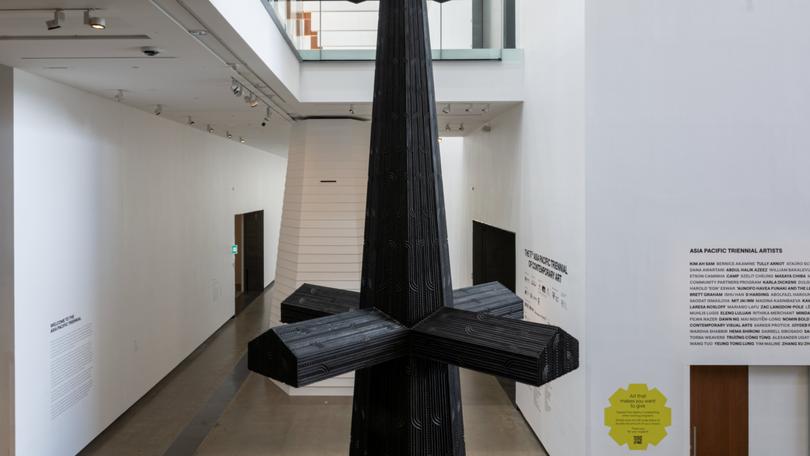
When it was launched in 1993, the Asia Pacific Triennial of Contemporary Art was a courageous experiment. Over more than three decades the show has continued to evolve, although the staggering amount of preparatory work never diminishes. For staff at the Queensland Art Gallery/Gallery of Modern Art, it seems they live from one APT to the next, and 2024 is no exception.
The pay-off is a connection to Asia that is constantly evolving, with the curators gradually acquainting themselves with the art produced by a growing list of countries. Along with the obvious inclusions such as China, Japan, India and South Korea, this year’s APT includes work from new participants such as Timor-Leste, Uzbekistan, and Saudi Arabia. It may be debatable whether Saudi Arabia is actually part of Asia, but hey, what’s Australia doing in the Eurovision Song Contest?
The other part of the APT that has grown more prominent over the years is the representation of artists from the Pacific. Aside from New Zealand it was once difficult to source major artworks from this immense, diverse region, but this year there are pieces from Papua New Guinea, the Solomons, Tonga, Fiji, Vanuatu and Hawai’i. Many of these works are by collectives or groups of artists, reflecting a close-knit, community-based approach to art and culture.
Sign up to The Nightly's newsletters.
Get the first look at the digital newspaper, curated daily stories and breaking headlines delivered to your inbox.
By continuing you agree to our Terms and Privacy Policy.The final total for the 11th APT exceeds 500 works by more than 200 artists, some on a monumental scale. Perhaps the biggest is an ensemble by New Zealand’s Brett Graham, although there were obviously many hands involved in creating these ornate sculptures that commemorate the wars of the 1860s between the Maori and the British settlers.
The first piece we meet upon entering the Gallery of Modern Art, is Graham’s nine-metre-tall, Cease Tide of Wrongdoing (2020), which stands like a great black totem at the entrance to the show. It sets a sombre, almost funereal tone, memorialising colonial violence and Maori resilience. It’s an elegaic beginning to an exhibition that generally strives to adopt a more positive tone.
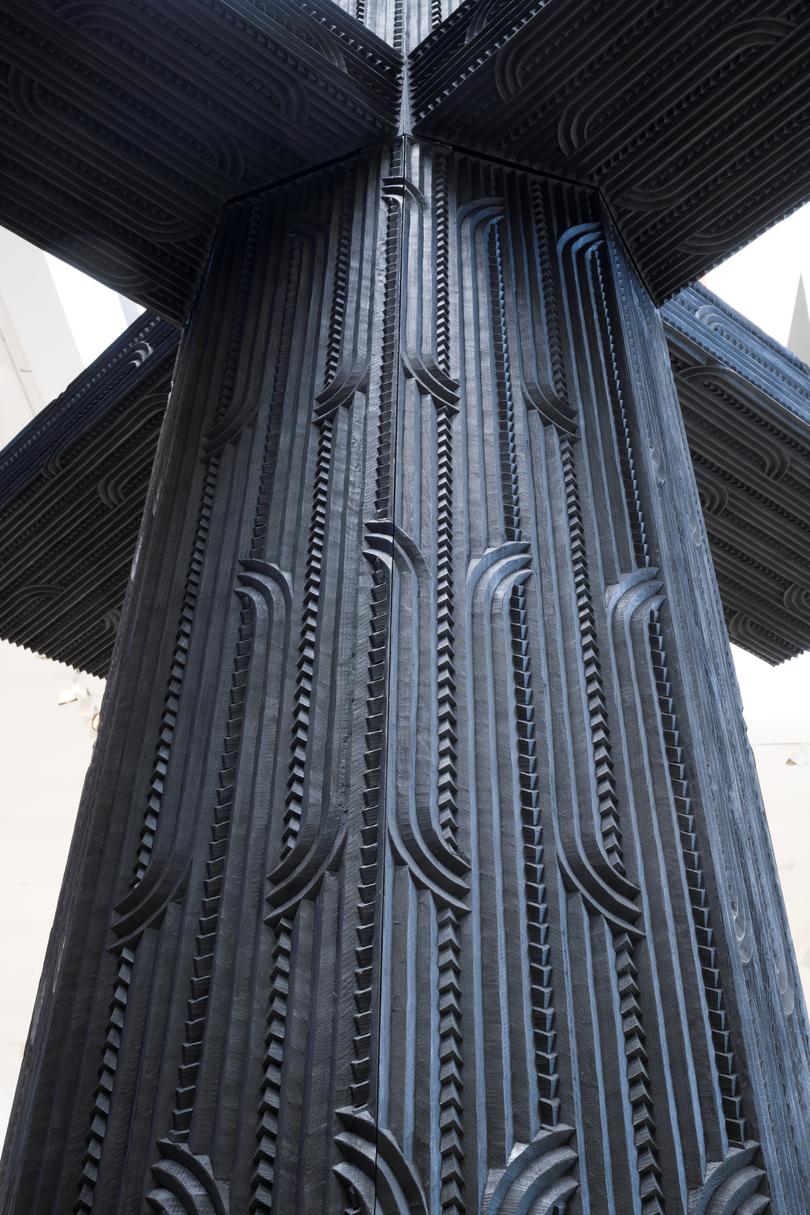
With a more sophisticated understanding of the communal basis of so much art made in the so-called developing world, the curators have relied on scale to provide the visual heft a major contemporary survey requires. Works that might be overlooked in a more reduced form impose themselves on the viewer through the sheer volume of space they command.
At 8m by 5.3 metres, a gigantic piece of embroidery by Madina Kasimbaeva of Uzbekistan cascades from the top of the gallery wall and continues onto the floor. A vividly coloured compendium of traditional symbols, Palak suzani took five years to complete (2016-21). It’s another statement of resilience, this time on behalf of a folk heritage that pre-dates the Soviet era, and even the advent of Islam. If it projects a more up-beat feeling this is largely because of the vibrant colours, all created by hand from natural ingredients.
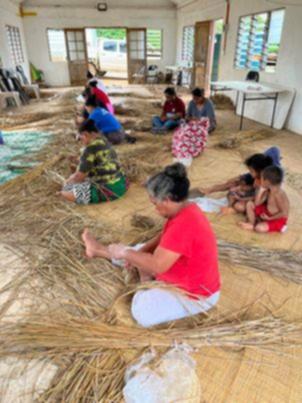
There’s a similar idea in a weaving by Aunofo Havea Funaki and the Lepamahanga Women’s Group, from Tonga. A vast mat, woven from local reeds called kutu, falls from the wall onto the floor. In the centre there is a coat of arms and a range of symbols, celebrating the continuity of monarchy and community.
Perhaps the most spectacular of the large-scale projects is the Haus Yuriyal of Papua New Guinea’s Western Highlands, featuring row upon row of brightly coloured shields, or at least, geometrical shield motifs painted on identically sized slabs of plywood. It’s the work of Yuriyal Eric Bridgeman and a large contingent of his clansmen, once again straddling the divide between age-old tradition and contemporary art. There are videos being shown in a frame house alongside the shield installation, and even a vegetable garden planted in the QAG’s sculpture courtyard.
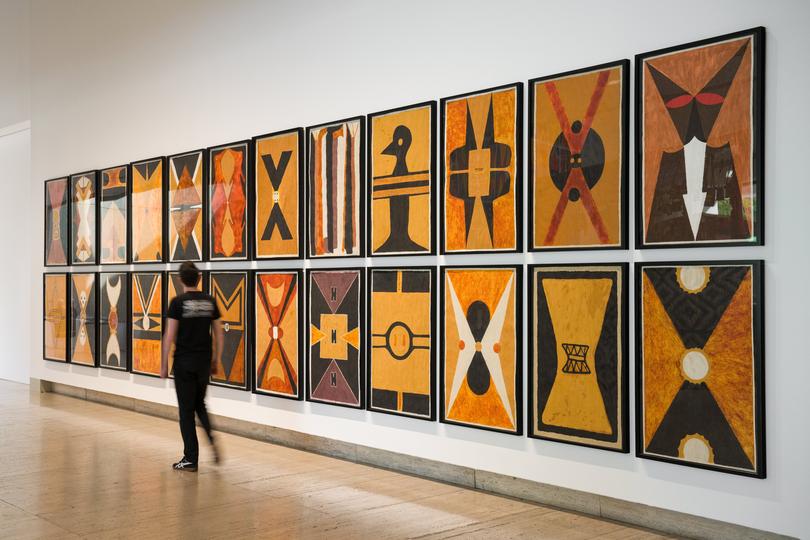
This is only part of the strongly communal nature of this year’s APT. There are significant clusters of artists from Nepal, and from Mindanao in the Philippines; a suite of tribal sculptures from Timor-Leste, a collective of weavers from Vanautu, and so on.
The other strategy that enables artists to create eye-catching works by simple means, is sheer repetition. Indonesia’s Albert Yonathan Setyawan has created hundreds of slipcast sculptures of a hand and a flame, which he has arranged in mandala-like patterns on the gallery wall. Nomin Bold and Orchibold Ayuzana, from Mongolia, have produced an equally large “curtain” of grinning metal skulls, a memento mori on a grand scale for a world in which death is asserting itself in so many places.

The curatorial drift towards collective and community-based work echoes a growing, global tendency to downplay the role of the individual creative ‘genius’ in favour of grassroots cultural expression. In this scheme of things, colonisation is treated as a primal catastrophe that has disrupted ancient forms of art and craft, now being reclaimed – albeit in hybrid, mutant variations.
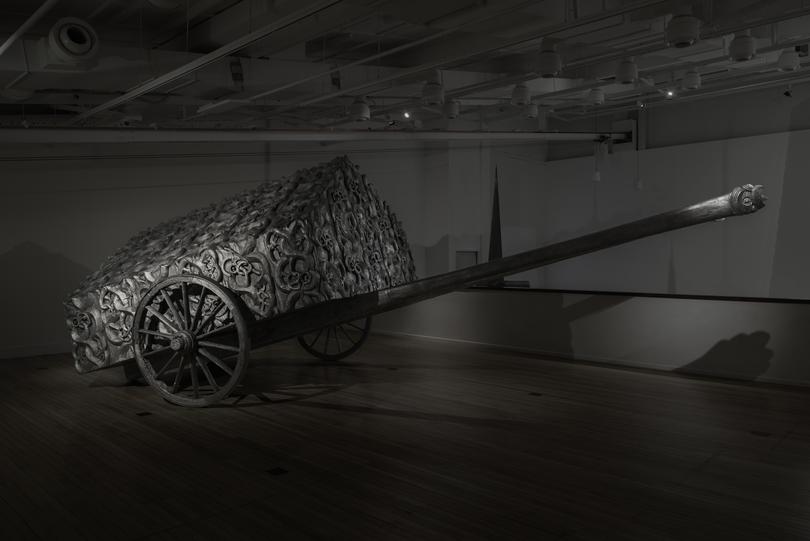
I’m not questioning the intellectual validity of this approach but from a viewer’s perspective there’s something less surprising, less dynamic in these collective projects. One of the elements that makes an artwork engaging to the viewer is a sense of originality, as an individual finds a completely idiosyncratic way of picturing the world. When a large group of people are all doing the same thing, inspiration is replaced by deliberation and consensus.
For me, none of the collective works were as striking and curious as Masaya Chiba’s madcap sculptural objects and video; Karla Dickens’s riotous junk sculptures, full of spiky political messages; Saodat Ismailova’s montages made from Soviet era movies; Rithika Merchant’s fantastic drawings; or Mit Jai Inn’s Untitled (Scrolls/Totem/Tunnel) – strips of canvas heavily spattered with paint, that sit somewhere between painting, sculpture and architecture.
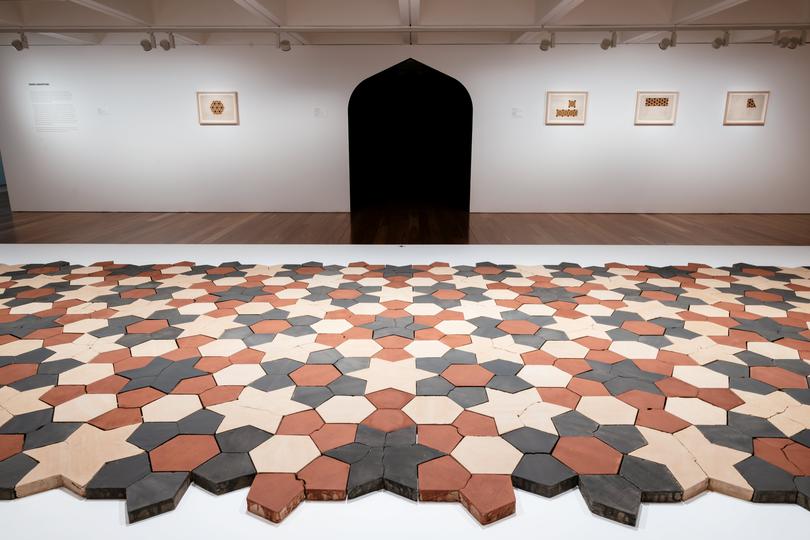
Perhaps the most gripping piece in the show is a stop-motion animation by Taiwanese artist, Zhang Xu Zhan, called Compound eyes of tropical (2020-22/2024), screened in a darkened room in which the walls have been covered with screwed up balls of newspaper. The lead character is a mouse-deer-fox which is attacked by crocodiles when it bends down to drink from a pond in the jungle. As it escapes the predator and uses the backs of the assembled crocodiles as a bridge to cross back and forth, the percussive racket of gamelans and drums gets louder and more frantic.
While everything is getting faster, noisier and crazier, one wonders what this demented fairy tale is all about. The mouse-deer-fox, which plays the role of the trickster in the folktale seems to take a manic pleasure in flirting with danger and thwarting its attackers. The bridge, built of crocodile backs, is unstable and treacherous. Is it possible to discern an allegory about Taiwan’s relationship with an increasingly menacing China? In a show that spends so much time poring over the relics of colonial history, celebrating collective efforts to sustain and revive community traditions, Zhang’s Compound eyes’ offers a sharp reminder of the hair-trigger tensions that run throughout most of the countries in this exhibition, and the fraught relations that exist between neighbours. This year’s APT has made a concerted effort to bring us the good news, but in these turbulent, congested regions, the bridges built by art are constantly being undermined by politics.
The 11th Asia Pacific Triennial of Contemporary Art
Gallery of Modern Art/Queensland Art Gallery, Brisbane
Until 27 April 2025
